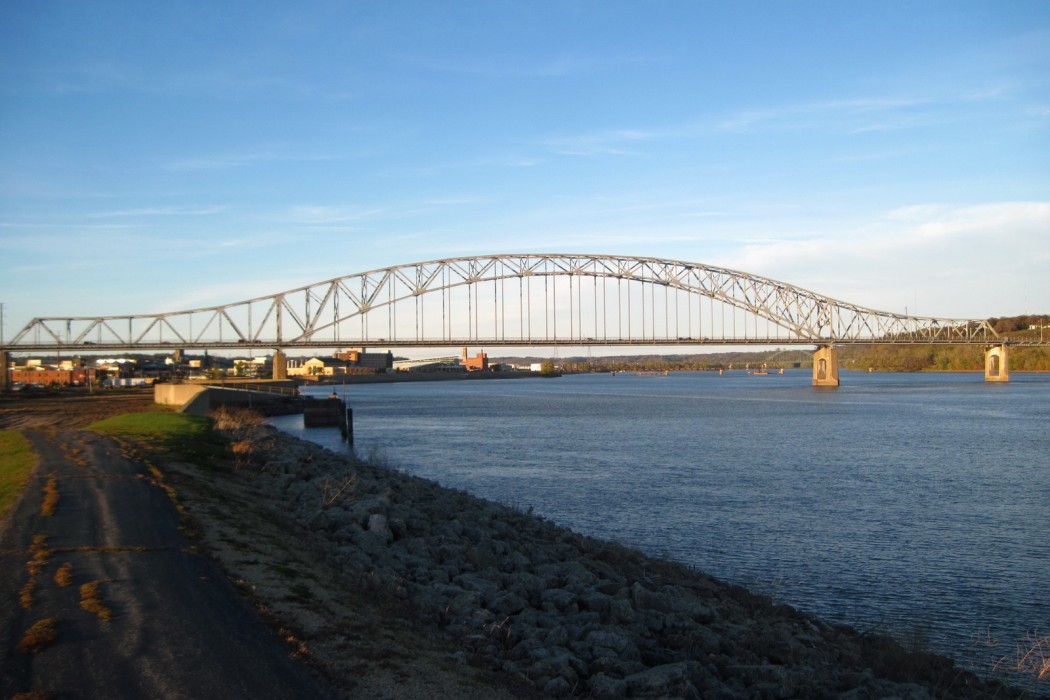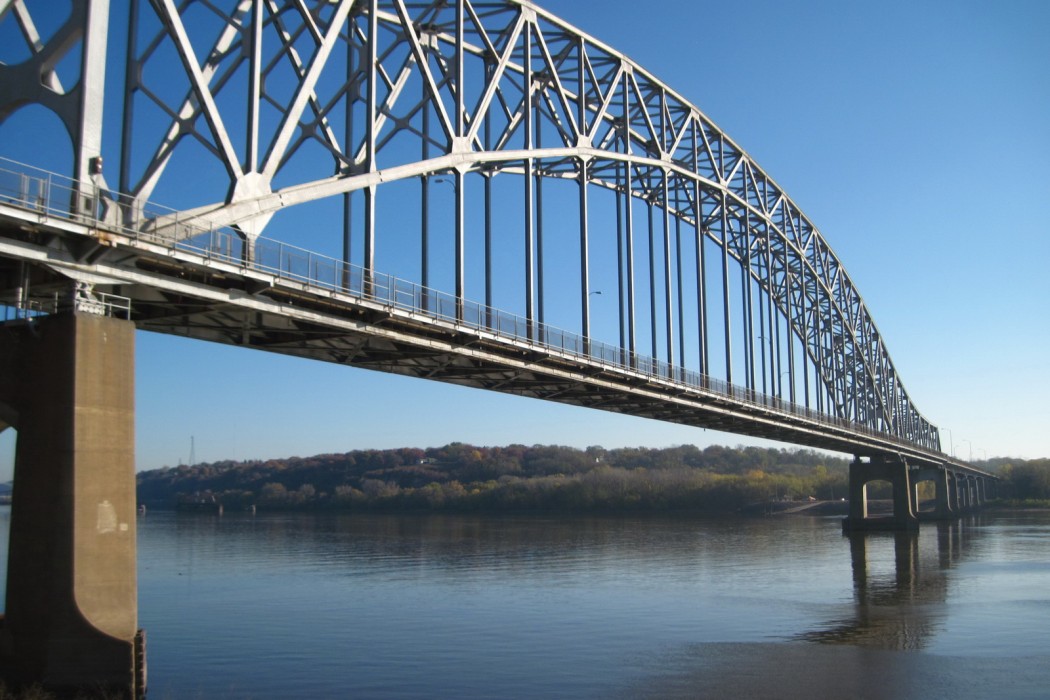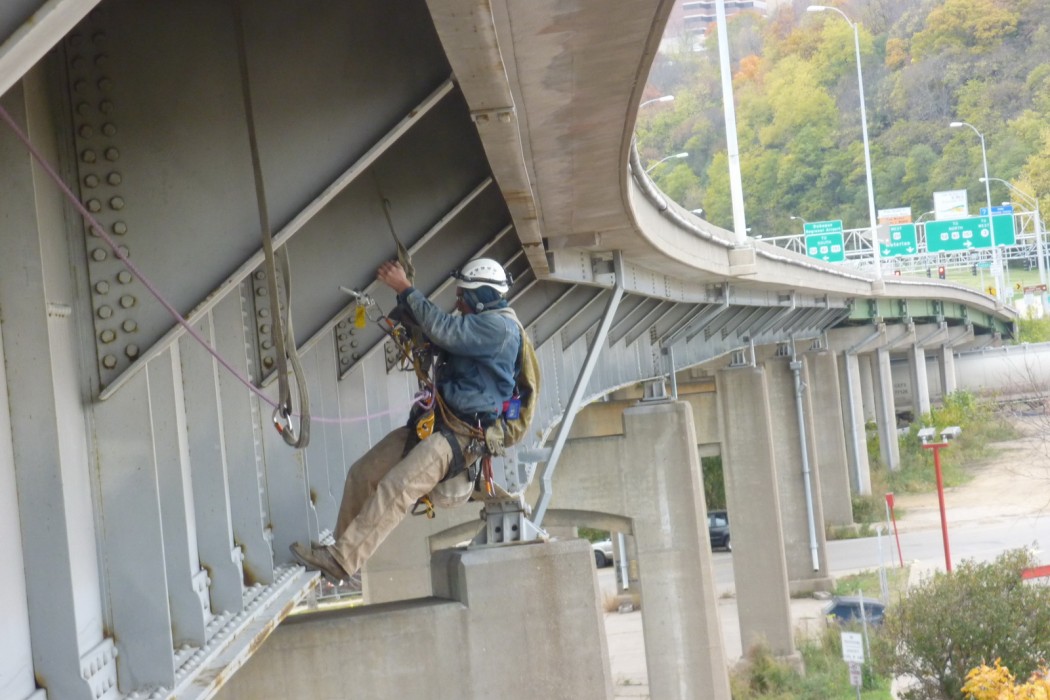WJE PROJECTS
Julien Dubuque Bridge
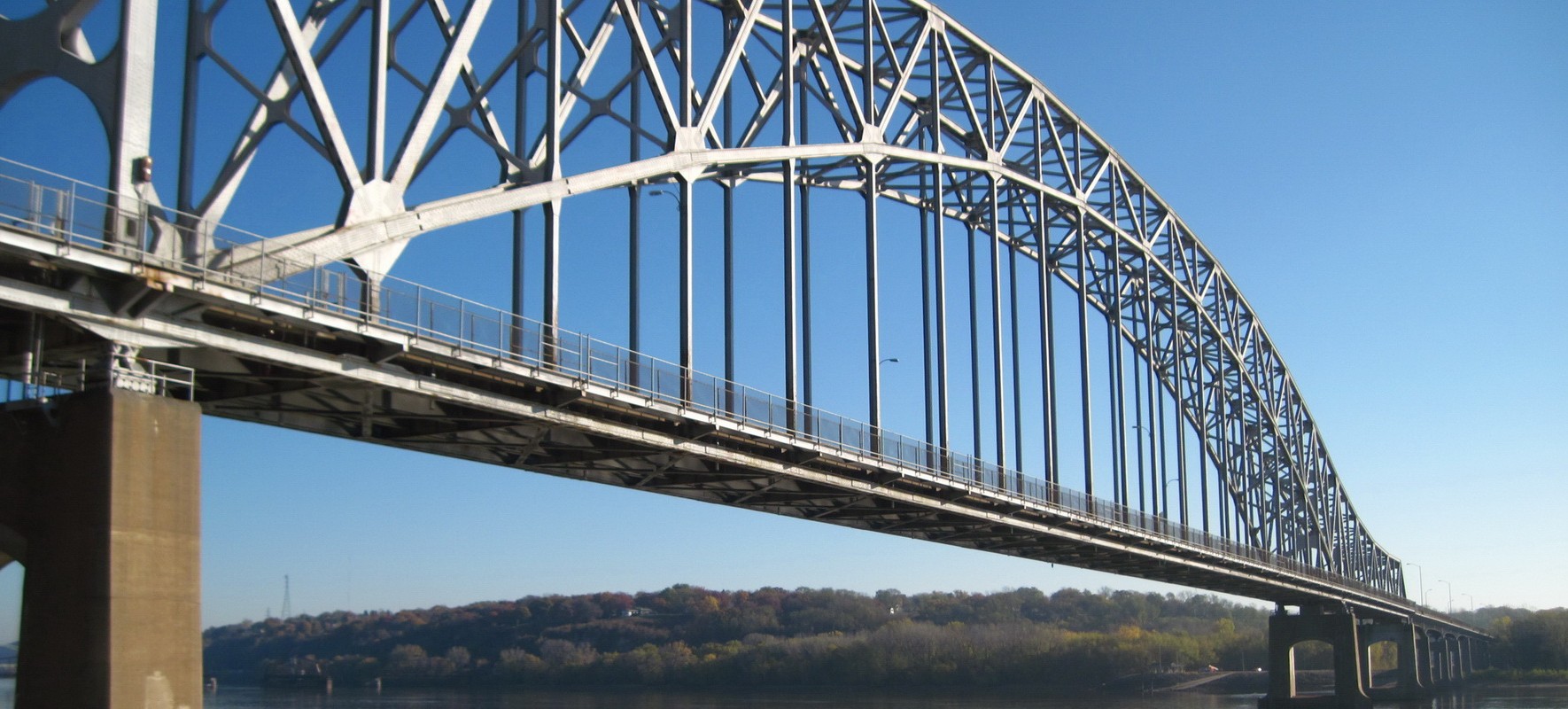
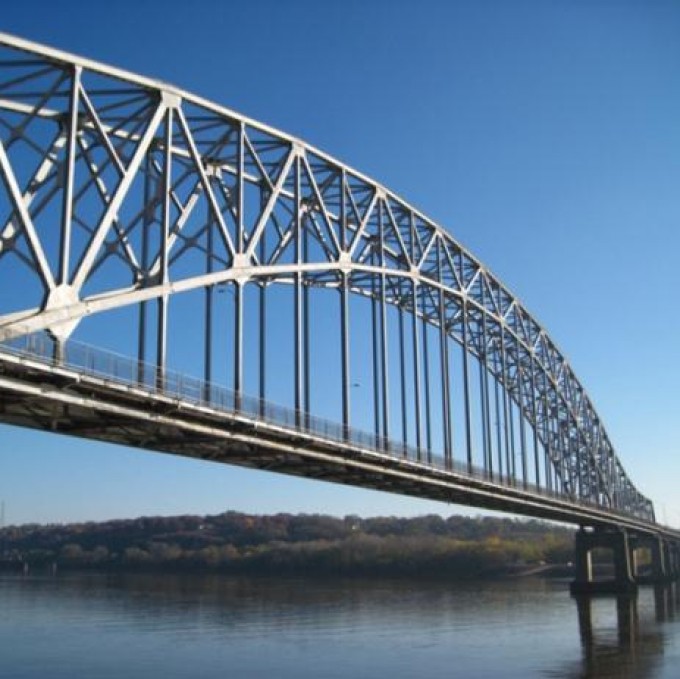
CLIENT |
Iowa Department of Transportation |
LOCATION |
Dubuque, IA |
In-depth, Fracture Critical, and Routine Inspections
WJE was retained by the Iowa Department of Transportation (IowaDOT) to perform in-depth, fracture critical, and routine inspections of the two-lane bridge structure. The inspections were to be performed without lane closures on U.S. 20 and with minimal disruption of traffic, as requested by IowaDOT.
BACKGROUND
The 5,635-foot-long Julien Dubuque Bridge carries two lanes of U.S. 20 over the Mississippi River between East Dubuque, Illinois, and Dubuque, Iowa. The east approach consists of twenty-three two-girder spans that are 2,773 feet long. The main structure is a 1,539-foot-long continuous three-span arch truss. The west approach consists of six multi-beam spans, measuring 387 feet long, and seven two-girder spans, measuring 936 feet long. The riveted structure was built in 1943 and has been modified several times.
SOLUTION
WJE engineers utilized industrial rope access techniques to perform in-depth condition surveys of the steel superstructure, including documentation of section loss, as well as an arm's length examination of non-redundant bridge elements subject to tension, including vertical and diagonal truss chords, tie girders, hangers, riveted plate girders, and floor beams. The engineers also conducted routine condition surveys of all substructure elements located above the ground or water line. As part of the surveys, all bearings were observed, and the positions of expansion bearings were measured.
WJE employed a variety of access techniques to most efficiently inspect various elements of the bridge. Access to the approach spans was gained using 60-foot and 80-foot boom lifts positioned under the bridges. To inspect the approach spans and main span deck framing over water, the engineers worked from a boom lift positioned on a spud barge. In addition to the steel superstructure trusses and hangars, rope access techniques were also used to access various approach spans where multiple railroad tracks prevented the use of a boom lift.
WJE's experience with and application of multiple access methods ensured the completion of a comprehensive inspection without any lane closures on the bridge.
RELATED INFORMATION
-
 Our knowledge of bridge performance is supported by technical expertise in structural... MORE >Services | Bridge Engineering
Our knowledge of bridge performance is supported by technical expertise in structural... MORE >Services | Bridge Engineering -
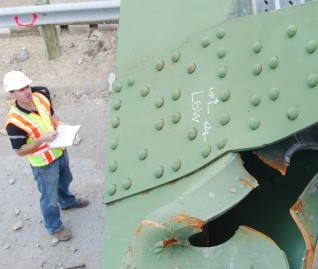 When the integrity or condition of a structure is in question, clients rely on us for answers MORE >Services | Structural Engineering
When the integrity or condition of a structure is in question, clients rely on us for answers MORE >Services | Structural Engineering -
 We have pioneered the use of nondestructive evaluation methods—such as ground penetrating... MORE >Services | Nondestructive Evaluation
We have pioneered the use of nondestructive evaluation methods—such as ground penetrating... MORE >Services | Nondestructive Evaluation




































